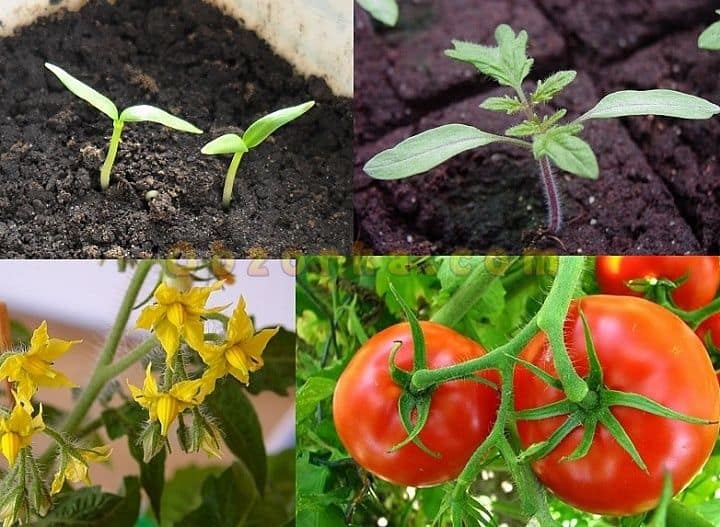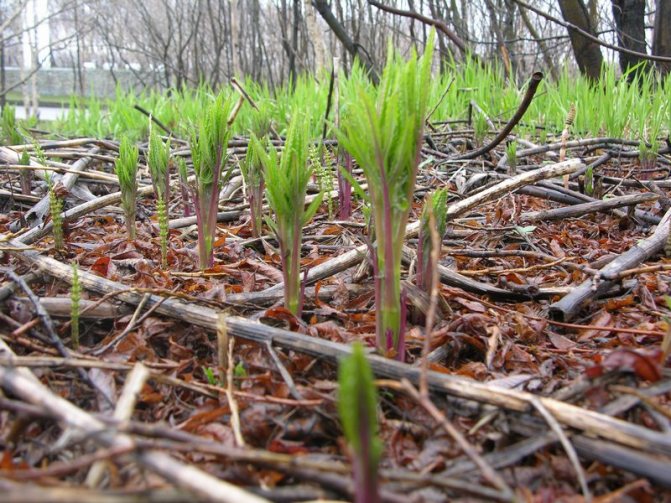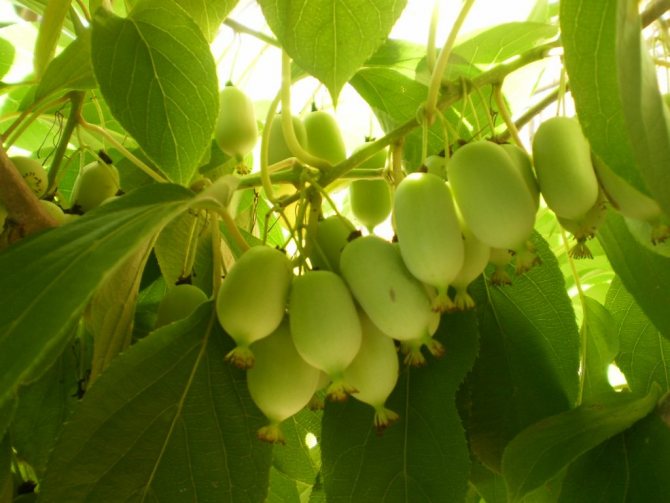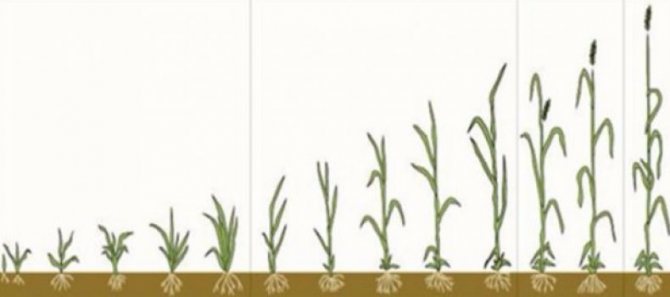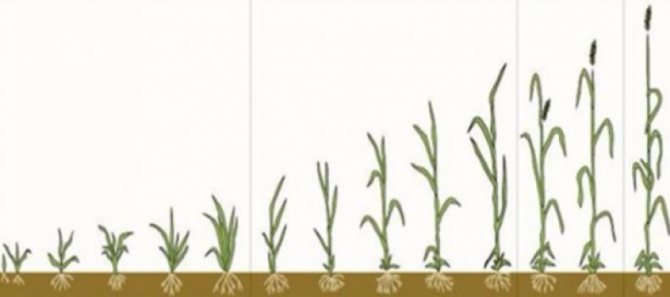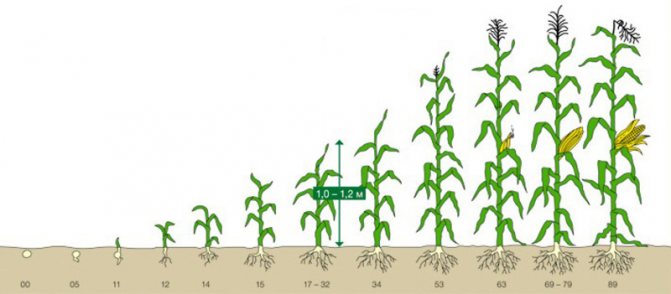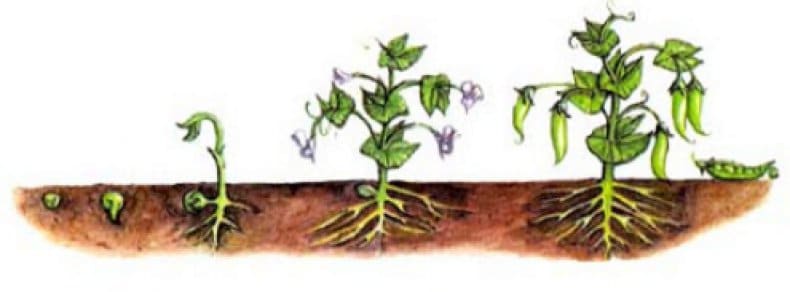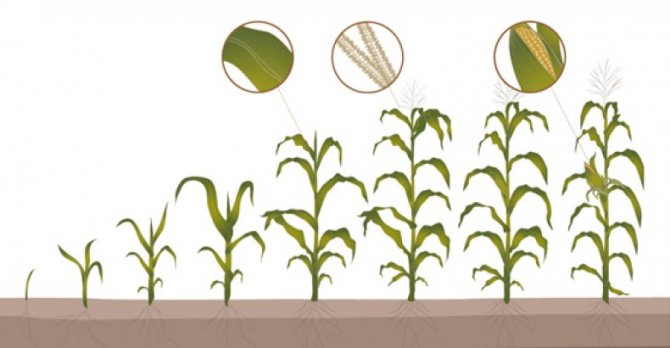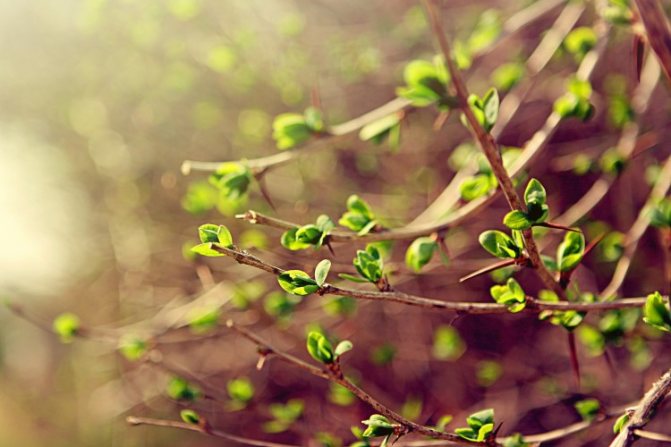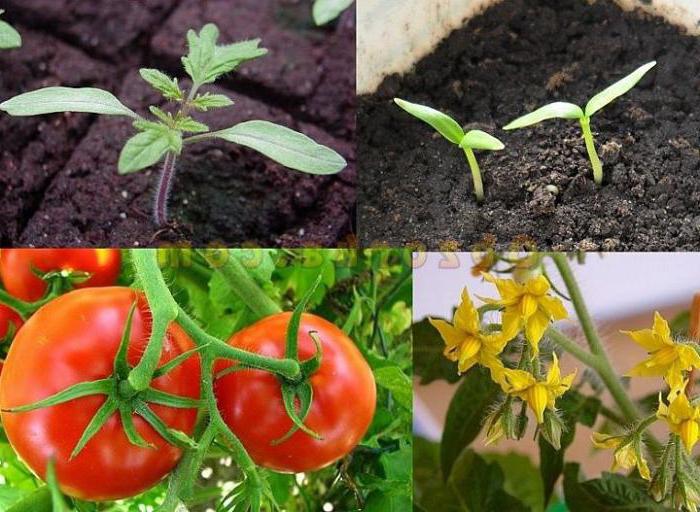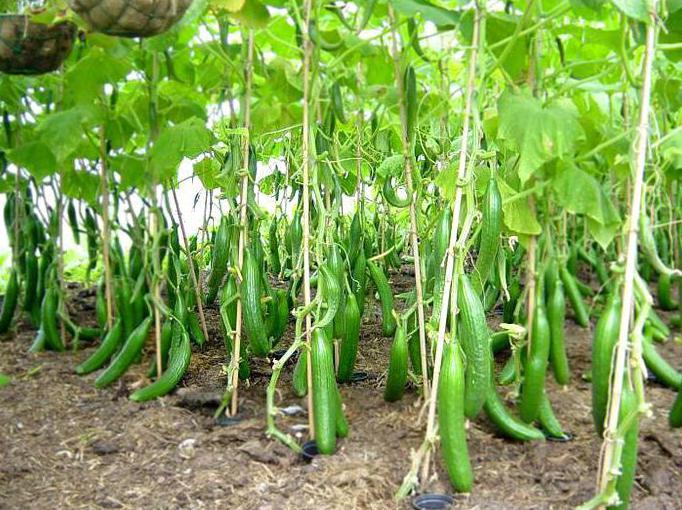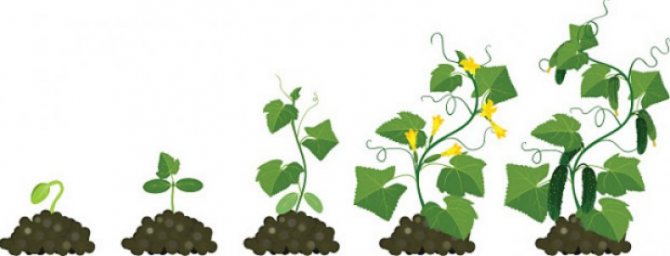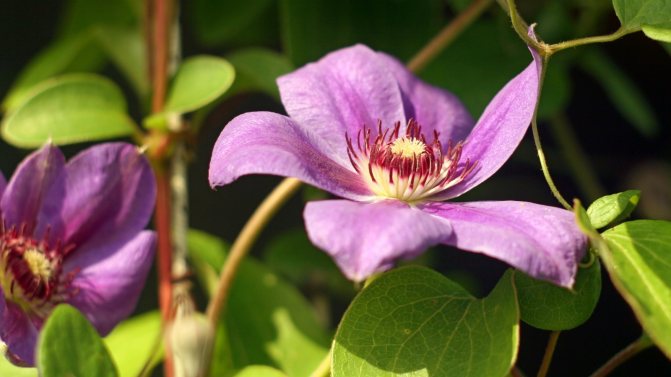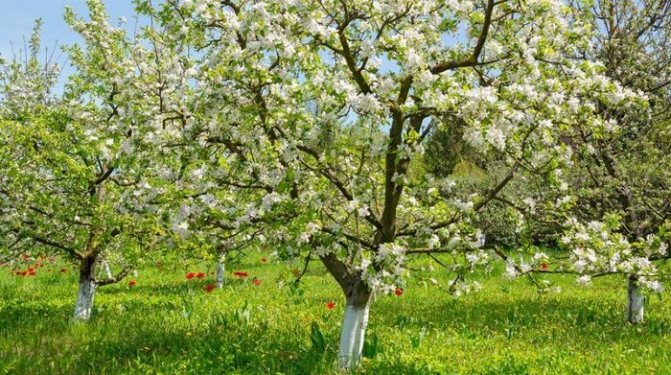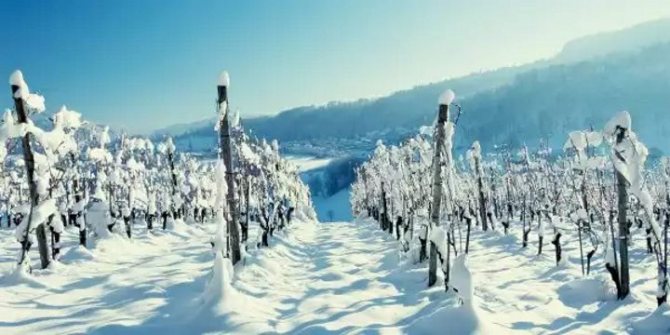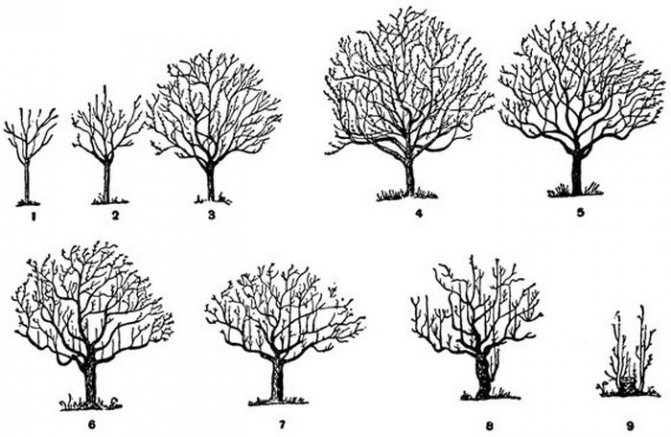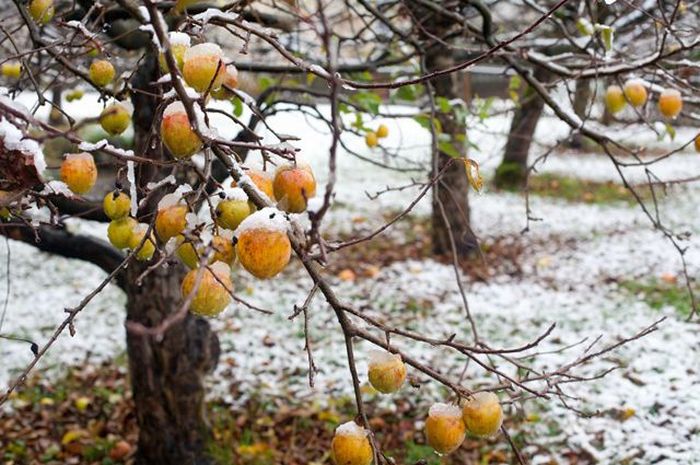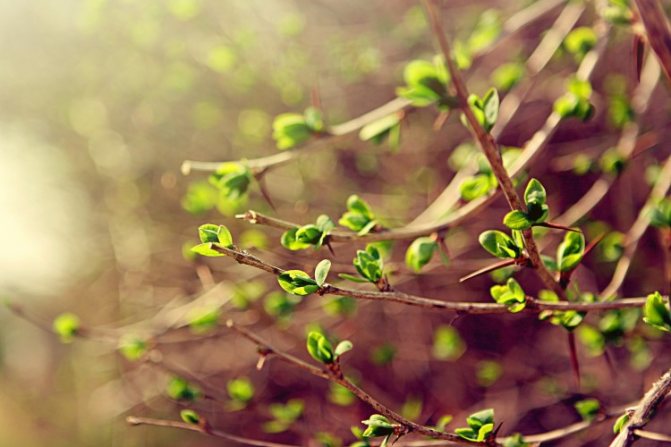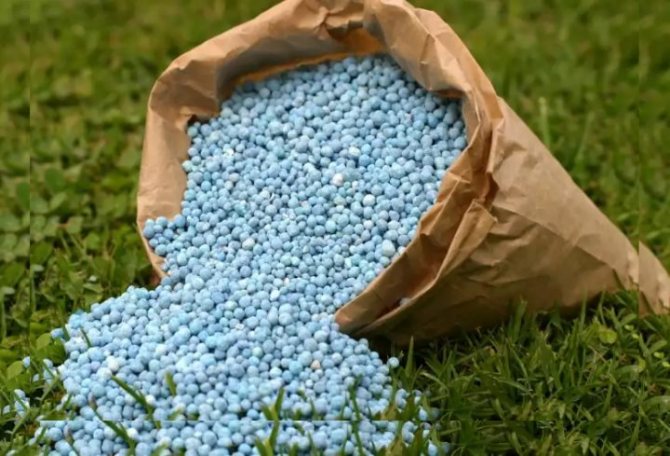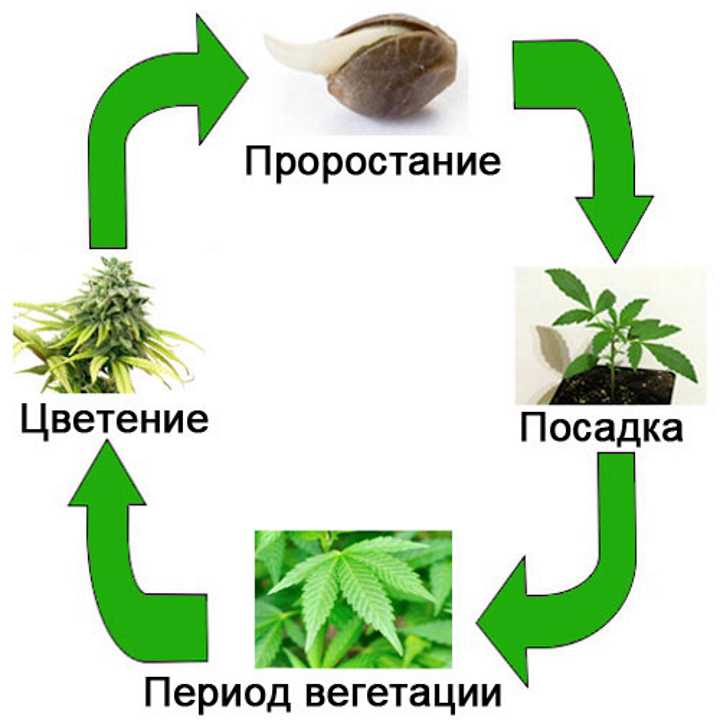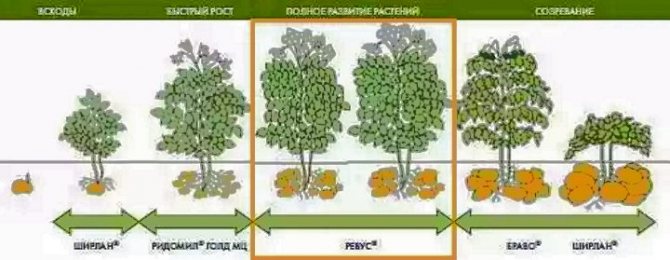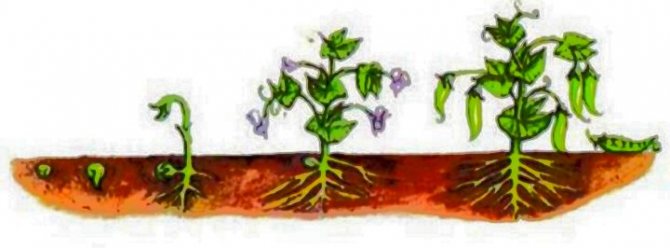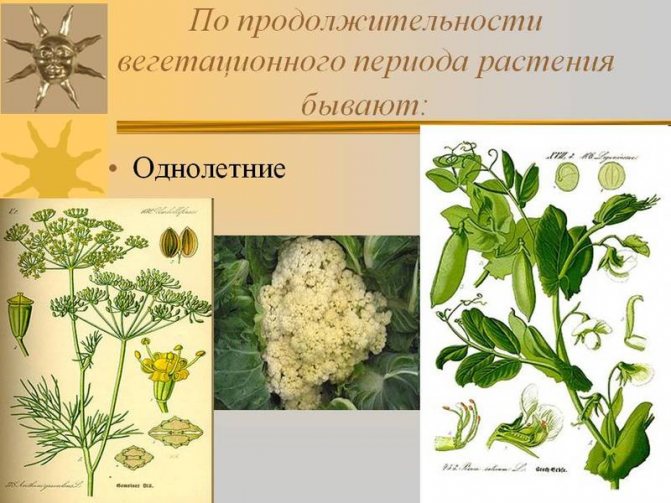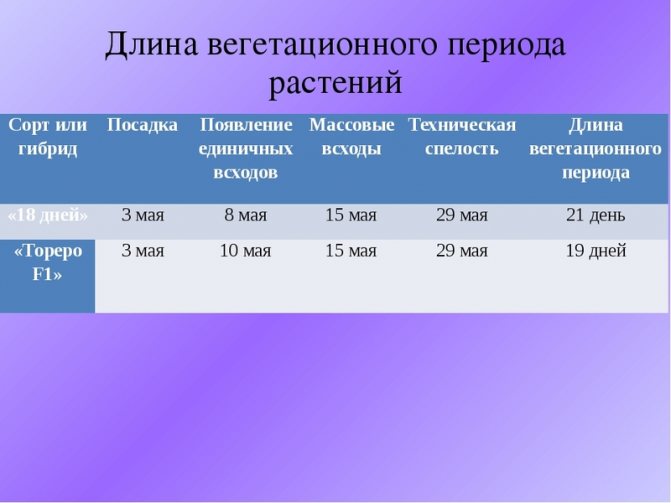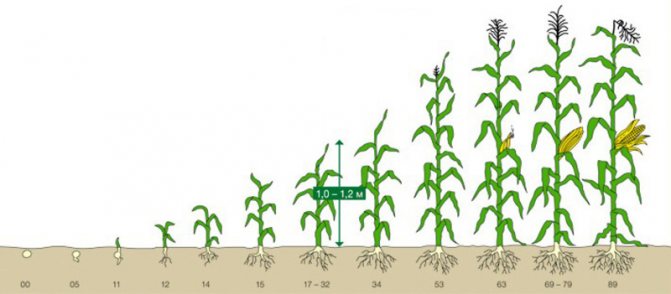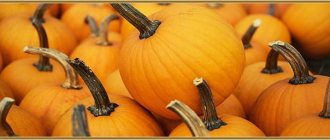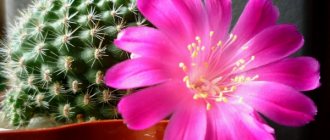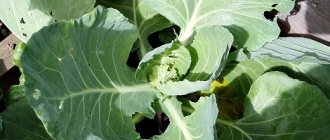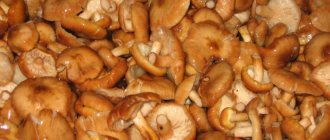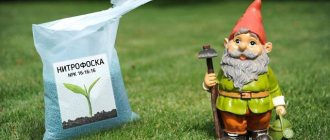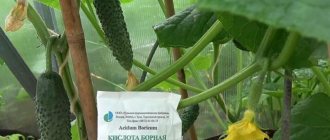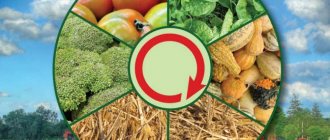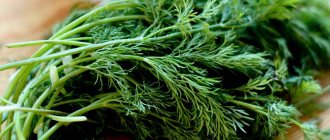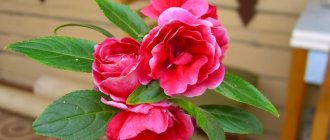The growing season and the growing season of plants are different concepts, although many do not know this. The first concept defines the timing of the development of a particular species or variety of plants. This refers to the time from the time of germination to the subsequent harvest. The growing season is the determining factor in which category a particular garden crop can be classified. Therefore, today there are three types of garden plants with different periods of fruit ripening - early ripening, mid-ripening and late-ripening. But the growing season, what is it? This is the name of a certain period of time during which the active development of plants takes place, taking into account the climatic conditions of the region.
How is the growing season determined?
Often, harvesting in the garden takes place before the seeds are ripe. In some cases, the ripening period of the fruit may not even come. For tomatoes, cucumbers and other vegetable crops that yield multiple harvests, it is necessary to determine the time of the first and last harvest. This will make it possible to correctly characterize this concept.
In fact, the growing season for each crop is variable. Its change can be influenced by many factors related to the characteristics of the variety and the growing environment. In this regard, it can last from several days to three months. With a lack of nutrients, good lighting and heat, this process can take an order of magnitude longer - up to 9 months. Vegetation is directly related to the process of growth and development of plantings, although these two concepts differ significantly from each other. The first concept implies an increase in size and shape, the formation of new cells and parts. While development is a qualitative change that takes place at points of growth. As a result, the plants begin to bloom, new organs appear, and fruiting occurs.
These two phenomena occur inside plants at the same time. The only difference may be their intensity and pace. This is influenced by the environment and the factor of heredity. The timing of the growing season can be controlled by creating favorable conditions for plantings to grow. Thus, it is possible to stimulate, or vice versa, slow down the growth of crops, if necessary.
Acceleration of vegetation
With an increased vegetation rate, the plants yield earlier crops. Sometimes this can be extremely beneficial, it encourages people to use special methods of accelerating the growing season to increase the volume of the harvest. These methods are based on the same provision of plants with the necessary moisture and nutrition, along with the use of substances that stimulate growth. Among these methods are:
- Growing in a hydroponic plant... The hydroponics method implies finding the roots of the plant not in the soil, but in a special substrate, which is in a solution of nutrients. Mineral wool, crushed stone, expanded clay or coconut fiber are often used as such a substrate.
- The use of growth stimulants. These drugs are based on phytohormones. With the help of growth stimulation, intensive root formation, flowering is caused, the number of ovaries increases and the ripening of fruits is accelerated.When using such drugs, it is extremely important to know exactly their purpose and strictly observe the dosage.
- Aeroponics cultivation. With this method, the plant and its roots are suspended. With the help of a spray solution of nutrients, the root system is constantly sprayed, other parts of the plant are not sprayed. In this case, a huge plus is the minimal likelihood of penetration of pests and the occurrence of diseases due to the lack of contact with the ground.
The use of the aeroponics method makes it possible to fully automate the cultivation systems.
The growing season for different crops
In annual vegetable crops - potatoes, cabbage, tomatoes, growth and development should occur in parallel and intensively. The same applies to fruit trees - apple, pear, plum, etc. This will increase the assimilation apparatus, ensure early and abundant fruiting. If you suspend the growing season of vegetables such as tomatoes or cucumbers, you can get a good harvest of delicious fruits. It is worth considering that such a technique will significantly affect the fruiting process itself, in which all the fruits do not have time to ripen.
I would like to note that the growing season for fruits, including the apple tree, begins in spring, when the buds bloom on the trees.
The duration of this process in an apple tree is influenced by the temperature and the length of daylight hours, which is due to the region where the trees grow. The intensity of the growth and development of the apple tree will depend on many factors - the variety of the plant, its agrotechnical characteristics and natural factors. Each breed of fruit and berry plants, including the apple tree, has its own phenophases, which occur at different times. Their change is influenced by the temperature regime, the level of air humidity, etc.
Vegetation of plants and the growing season - what is it
Vegetation is a stage in a plant's life characterized by its active vigor. It is associated with changes in weather conditions, usually with the arrival of spring. In the spring, the plant comes to life, grows, multiplies.
The increase in air temperature and the arrival of daylight hours stimulates it to actively develop. Vegetation primarily depends on the terrain and weather conditions in which the culture grows. At this stage, only a few horticultural crops are capable of producing more than one harvest. Others, on the contrary, do not have a chance to bear fruit under not very favorable conditions.
Period shortening
If cultivation is aimed at obtaining greens, roots or stems, gardeners stimulate growth, while slowing down the fruiting process. This technique is effective in the process of growing potatoes, cabbage and other garden crops. This is due to the fact that in such plants, at the flowering stage, the fruits begin to coarse and lose their taste. The same happens with perennial garden crops, which are recommended to be stored in a cool room during the cold season. This condition will provide an active flowering process, suppressing their growth. Slowing down growth will allow better and longer preservation of the harvest of cabbage, potatoes and other vegetables.
All these subtleties should be known to every gardener in order to be able to properly regulate the growing season of plantings. After all, this is the key to a plentiful and high-quality harvest in the future.
Every gardener or gardener wants his work not to be in vain, and the planted crops to grow and give a good harvest. To do this, you need not only to diligently care for the seedlings, but also to know in what period it is best to plant them. In this matter, a deeper knowledge of the stages of development of plant crops can help. One of them is vegetation. What it is? Read about this in our article.
Plants, like all living organisms, grow and change over a period of time.This is vegetation - the process of development, growth of various garden crops. Any period of the year during which the plant grows and changes is called the growing season.
Each plant organism is characterized by the following phases of its life cycle:
- Vegetation. Activation of growth begins: swelling of buds on trees, the beginning of sap flow, root growth, preparation for reproduction, the transformation of buds into shoots, and then into leaves, in the axils of which flower buds begin to form. After flowering, growth slows down, fruits begin to ripen.
- Peace. Most of the physiological processes are suspended, the plant does not waste resources.
- Preparing for winter. Late autumn is the end of the growing season. Leaves from trees fall off, dying off begins (in annuals - complete, in perennials - the upper parts of the plant).
- Ready for vegetation (in perennials). The growth processes are resumed, the plant spends on this useful substances accumulated over the past period.
The dependence of the growing season on weather conditions, climate, terrain is obvious. So, in the southern regions this period is longer, as a result, there is a larger harvest. In the north, this time for plant organisms is significantly shorter.
Table. Temperature range for some types of vegetables
| Vegetable culture | Optimum temperature | Critical temperature | |||
| Swelling of seeds | Seed germination | The origin of fruits | Seedlings | Grown plants | |
| Cucumber | + 14-16 ° C | + 25-30 ° C | + 22-28 ° C | + 6-8 ° C | + 2-3 ° C |
| A tomato | + 10-12 ° C | + 25-30 ° C | + 20-27 ° C | + 3-5 ° C | -1 ° C |
| Eggplant | + 14-16 ° C | + 25-30 ° C | + 25-30 ° C | + 5-6 ° C | -1 ° C |
| Cabbage (cabbage) | + 2-3 ° C | + 15-23 ° C | + 15-17 ° C | -2-3 ° C | -8-10 ° C |
| Pepper | + 14-16 ° C | + 25-30 ° C | + 25-30 ° C | + 5-6 ° C | -1 ° C |
| Carrot | + 4-6 ° C | + 17-25 ° C | + 15-25 ° C | -2-3 ° C | -3-4 ° C |
Important!
Each type and variety of crops has its own temperature. However, for both fruit and vegetable plants, +5 ° C and above are considered optimal for the start of growth, provided that this temperature is stable for a week.
For perennials who love warmth (grapes), the optimal temperature for the start of active growth will be + 10 ° C. Raspberries, for example, begin to "come alive" at the end of March. To start the development of the pear, a temperature of at least 6 ° C is needed.
Some horticultural crops are capable of producing more than one crop, others may not yield at all. It all depends on heredity and the environment in which the seedling will be located.
Video - Vegetation of grapes
Methods for influencing vegetation
The growing season of plants can be influenced by several methods, among which are:
- watering;
- fertilizers;
- temperature regime;
- spraying.
Each of these methods is worth considering in more detail.
Watering
Regular watering is essential for any growing plant. Most of all, fruit and leafy vegetables need this, especially those that have not yet fully hardened. The optimal time for watering when placing vegetables in the open field will be lunch or evening, you should not pour too much water. If the plants are located in a greenhouse, it will be best to water them before noon - this way the water will have time to be completely absorbed before nightfall.
Tomatoes need to be watered at the root because watering the leaves of these plants increases the likelihood of certain diseases. Onions require watering only at the beginning of their growth.
Some plants do not need to be watered under normal rainfall conditions. These plants include garlic, red beets, onion sets and some others.
Fertilization and feeding
Fertilizers and fertilizing are substances that supplement the nutrition of the grown plants and change the properties of the soil. It is especially important to fertilize and feed perennial plants and trees. Fruiting bushes, which yield early crops, begin the growing season with nutrients remaining in the fall. With a shortage of these substances, the plant will not bear fruit annually - it will have to save part of its nutrition to support life. That is why it is necessary to provide care for plants not only in the spring-summer period, but also in the fall.
At the beginning of development, nitrogen-containing fertilizers are suitable for trees.So you can provide a large harvest for several years in advance. But it is not worth using this fertilizer in the autumn period - this can only harm the plant. Also, bird droppings are considered useful solutions and fertilizers. Before use, it must be stirred and allowed to stand for several days. After that, the fertilizer can be applied by first diluting it by half with water.
Spraying
Many plants need regular spraying against pests and diseases, otherwise the harvest may be significantly delayed, and its quality will become noticeably worse. They begin to spray trees and shrubs with the melting of the snow, when buds are already forming.
There are many different spray products on the market today. Harvesting fruits after such processing is safe only after 3 weeks. Before spraying, you should take care of special clothing: glasses, gloves, respirator. You can buy it in the same specialized stores that sell fertilizers and sprays.
Temperature
The growing season of plants requires certain climatic conditions. For dry areas, development is limited in time, and in areas with a temperate climate, this process can be significantly extended, which allows you to get a larger yield.
Conventionally, the vegetation framework for the development of most plants is usually combined with the moment of transition of the average daily temperature in autumn and spring beyond + 5 ° C. But it should be understood that this figure is average, and each plant species has its own favorable development temperature.
Depending on the perception of temperatures, plants are divided into cold-resistant and heat-loving. For the former, a lower temperature is preferable, relative to the average, and a high one will be detrimental, for the latter, the opposite is true. Therefore, before planting any crops, it is necessary to study the features of their susceptibility to certain climate conditions in a given area.
For the normal development of plants, one should also not forget about their various diseases. Before planting, it is necessary to get rid of diseased plants; it would be best to burn them.
The most effective ways to ensure optimal growing conditions are watering and fertilization. Plants need to be watered regularly, depending on the water requirement of each species. Nitrogen-containing and organic fertilizers should be applied in the spring and summer. With the help of these measures, you can significantly increase the yield.
How long does the growing season last?
So, the growing season is a certain period during which the plant begins to actively grow and develop. For the gardener, this is the period from planting to harvest. Not all crops have time to mature completely, and the collection begins earlier than the due date. At the same time, the concept of the growing season is rather meteorological. This is the interval during the year in which crops develop and grow, depending on the climate of the area. This value is not constant and has a run-up from several days to 3 months. For our climate, the growing season of 9 months is the maximum.
In addition, any type of culture has a number of its own characteristics, including the time it takes to grow.
The duration of the potato growing season is 105-135 days, depending on the specific variety. The beginning of the growing season can be considered the appearance of shoots, the end is the drying out of the bush. Cabbage has 2-6 months. Each species and variety has its own characteristics and terms, be it fruit and berry or vegetable plants. For example, a garden decoration - flowers - can vegetate from several weeks.
Video - Cucumbers during the growing season: care
Note:
on packages with seeds in the line "growing season", as a rule, the time from germination to fruit emergence is indicated.
The growing season depending on the type of plant
The variety of plant species on our planet is amazing. Various herbs, vegetables, berries, trees, shrubs - each representative of the flora has its own characteristics of development. Vegetable and fruit crops are the most important for agriculture, therefore, it is their growing seasons that should be considered in more detail.
Vegetation of currants, raspberries and gooseberries
After winter, currants wake up early - the buds swell with the onset of spring. The rate of its development depends on the area of growth. Following the buds, after a couple of weeks, buds begin to form, flowering lasts no more than a week.
Raspberries begin their growing season at the end of March, the difference in varieties here does not really matter. Raspberries bloom in a few months, the ripening of the berries ends in the middle of summer.
Gooseberry vegetation period begins earlier than other shrubs. After 3 weeks, it blooms, and after two months, berries appear.
Removing old dry branches helps the gooseberries and currants grow better.
Vegetation period for fruit trees
Here everything begins with the swelling of flower buds, a week after them, leafy ones swell. Depending on the species, this period for trees has its own characteristics.
Apple trees begin to bud at 10 degrees outside the window. These trees bloom for a week and a half. They can bear fruit all summer, from July to late autumn, it all depends on the variety.
Already at six degrees above zero, pears begin to awaken. Two weeks after the beginning of the growing season, pears bloom. With a sharp cold snap, the growing season may stop. A week or more after flowering, the trees begin to bear fruit.
Plums bloom in May, after which fruits are formed on them, the ripening of which ends by August or mid-September, depending on which variety.
Cherry is not so demanding on the temperature regime, care and composition of the soil, so its growing season begins in April and passes quickly.
Cucumbers, tomatoes, cabbage, potatoes
According to the duration of the growing season, crops are distinguished:
Table 1. The demand of vegetable plants for heat, depending on the growing season
For adult plants
The growing season of potatoes lasts about 4 months. This indicator is averaged for early and late maturing varieties. First, a sprout sprouts, then the potatoes bloom and pollinate, then inedible fruits appear on the bush. The end of the growing season comes with the drying of the upper part of the bush - this time heralds the fact that you can start harvesting.
In early cucumbers, the growing season takes about 100 days, in late-ripening cucumbers - two weeks more. The cucumber bush blooms in about a month from the beginning of growth, then until the end of the growing season the plant is able to bear fruit and bloom. The end of the growing season occurs at the beginning of autumn.
The growing season of cucumbers can be accelerated if the seeds are warmed up before sowing.
The growing season of tomatoes is similar to that of cucumber, only the time frame is slightly shifted: the earliest ripening tomatoes can ripen in 2 months, the latest varieties ripen up to 4.5 months.
For cabbage, this period lasts from 3 months to six months.
Cyclic vegetation of fruit
Separately, it is worth talking about garden trees that bear fruit every year. Their growing season is the most difficult.
The only exception is that trees do not complete their life cycle at the end of a certain period of time.
From the moment of its appearance, the sprout actively accumulates starch, roots develop. Coating with wood gradually takes place. The beginning of the growing season of the tree can be seen by the blossoming buds. This gives an impetus to slow down the formation of tree bark and accelerates the growth of small roots, which absorb liquid and nutrients from the soil. This happens until the onset of frost.In winter, the tree goes into a dormant stage. Outwardly, it does not seem alive, but the root system still feeds from the ground for some time. In the spring, the growth of roots resumes, and all the accumulated nutrients enter the crown of the tree. Flowering begins and a new growing season begins.
This is the life cycle of any tree, be it cherries, apple trees, chestnuts, poplars or others. They have only minor temporal differences. So, stone fruit buds (cherries, cherries, etc.) will form in 2.5-3 months, but apple trees will need a longer period to bloom.
If the timing of the onset and end of the growing season coincided for all crops and depended strictly on the time of year, gardeners would certainly not have any problems with gardening. However, in order to achieve high yields, it is necessary to control and manage the vegetation of the plants.
Important!
It is good if the growth and development of annual vegetables (tomatoes, cucumbers, cabbage, potatoes, etc.) occur simultaneously. The same is true for fruit trees - apple trees, plums, pears, etc.
So, in order to achieve high-quality fruiting at the end of the summer cottage season, the gardener can slow down / speed up the growing season. For example, for cucumbers and tomatoes, it will be useful to slow down the growing season at the very beginning of development, and for root crops - to postpone flowering so that the taste of the vegetable is richer.
Braking factors are:
- insufficient amount of moisture;
- limited exposure to light;
- low amount of nutrients.
However, in the climate of Russia, it is more often necessary to accelerate the growing season, especially for crops that love warmth. For these purposes, it is usually customary to use:
- greenhouses, shelters;
- various dressings, growth stimulants;
- regular maintenance of the area around the plant (weed removal, hilling, loosening the soil).
Vegetation depending on seasonality
A period of time a year long for perennial plants is usually divided into 4 periods:
- vegetative growth;
- autumn transitional;
- relative peace;
- spring transitional.
Repetition of these periods in perennial plants on the territory of our country occurs annually. The growing season includes only three points out of four. The winter period is not attributed to this time. Depending on weather conditions, the beginning of the spring and autumn transition periods may vary.
Autumn period
This time period is characterized by the covering of plants with a woody layer. This is due to the starch accumulated during their active life - it is converted into sugar, which provides good protection for the winter period. In the fall, small roots that absorb nutrients continue to grow continuously. They grow until the onset of frost. Most annual plants in our country end their life cycle in the fall.
Dormant period
The visible active life of plants during this period ceases. Accumulated nutrients allow perennial plants to support life. However, in the ground at a depth of several tens of centimeters, the roots continue their work, allowing trees and shrubs to receive part of the food. By the beginning of spring, food reserves are significantly depleted.
Sometimes you can observe the manifestation of plant activity during the thaw period, when the temperature rises high - some herbs begin to turn green, buds swell on the trees.
To keep perennial plants alive, it is important to replenish their nutrient reserves. Due to the strong loss of moisture during the winter, plants may die, so additional watering in the autumn will not be superfluous for them.
Spring period
In the spring, the plants continue to grow the root system. At the same time, the activity of the ground part rises sharply.The process of plant development proceeds the faster, the longer the length of daylight becomes and the higher the temperature. For annuals, this period is most often the beginning of the life cycle.
Top dressing and fertilizers
Top dressing for various crops is divided into two types:
- Root. It is carried out by watering or sprinkling the soil in which the plant "sits". It has become widespread among summer residents due to its simplicity and usefulness. It is most effective during the period when the seedlings have not yet been planted in the ground, since when they grow already on the territory of the summer cottage, there is an influence of external factors (frequent watering, rains that wash out many useful substances).
- Foliar is a simple spraying of the leaves and stems of the crop being treated. It is also quite easy to use, but used less often. Good for crops planted in the ground due to the rate of absorption of nutrients.
Regardless of the method, seedlings need to be processed in the absence of bright sunlight.
Nitrogen fertilizers
Most often, nitrogen fertilizers are used to improve vegetation. In annual vegetables, this remedy is effective if used in the spring or early summer, since in the fall, when the growth of crops comes to an end, it no longer makes sense to fertilize the soil.
Note:
feeding seedlings is best done in the early morning. In no case do not allow fertilizer to get on the leaves, this will cause burns.
If the plants stopped growing and the lower leaves began to turn yellow, these are sure signs of nitrogen starvation. To remedy the situation, you need to feed the seedlings:
- urea (44%);
- ammonium nitrate (35%);
- ammonia water (15-25%);
- ammonium sulfate (20%).
Top dressing can be in solid (granules) and liquid forms. Of course, the effectiveness of the action of liquid fertilizers is higher due to the speed of delivery of the substance to the roots of plants. Before feeding the seedlings with a solution (1-2 tablespoons per 10 liters of water), water it well, let it settle for a couple of hours, loosen the soil and only then "feed" it with nitrogen.
Phosphate fertilizers
Another good feeding tool is phosphorus fertilizers (diammophos, superphosphate, phosphate rock, etc.). They help the root system develop well. With an insufficient amount of phosphorus, the plants begin to darken, the leaves begin to fall off. To stop this process, you can use the most accessible source of this substance - superphosphate: dilute 3 grams of fertilizer with 1 liter of water. Water at the root.
Potassium fertilizers
Also, gardeners often use potassium-containing products:
- potassium sulfate (50%);
- potassium monophosphate (33%);
- potassium nitrate (45%).
The first time you can treat the sprout with potassium only when three leaves appear, the second - two weeks after planting in the garden.
Important!
It is best to alternate the feeding of plants with different substances, as well as combine it with fertilizers that promote growth ("Kornevin", "Epin", "Zircon", etc.).
In addition to various chemicals, you can also use organic ones: manure, humus, chicken droppings, peat and others. The special advantage of such fertilizers, of course, is their naturalness and safety for the garden, animals and people.
Accelerating the growth process
Plant care and various agrotechnical measures fall on the phenophase of culture development. Most of the bushes that bear fruit or berries grow and develop thanks to the plastic material present in the root system and parts of it above the ground. This material is the result of accumulations over the past year, but not in any way the components present in the soil at the moment.
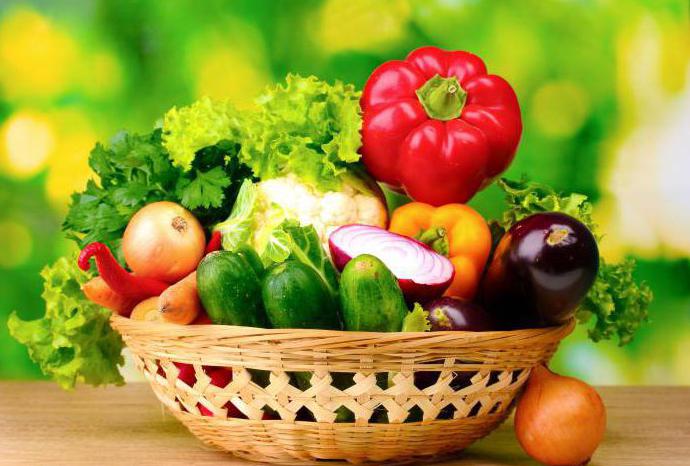
In cases where the plant culture has not accumulated the required amount of nutrients, periodic fruiting is inevitable due to a lack of strength to lay the buds in order to get a good harvest next year.In order to stabilize the ability to bear fruit, as well as the growth of the crop, it is required to provide the plant with nutrients in the autumn season. For this purpose, fertilizers with a high content of the necessary element - nitrogen are widely used. At the initial stage of the growing season, they will contribute to the formation of buds, thanks to which an excellent rich harvest can be obtained in a year.
Vegetation accelerators
Today, there are many special preparations that help accelerate the growing season of various fruit and vegetable, berry, annual and perennial crops. The assortment of modern stores always has what you need in each specific case.
The sequence of using these drugs may be as follows:
- Leave the seed in Kornevin's solution for 6 hours.
- Strengthen the roots of the sprouted sprouts with "Epin" / "Zircon".
- Before planting in the ground, treat the roots with Kornevin.
- Spray the plants with Zircon 2 times a month.
Attention!
Any means for accelerating growth has its own characteristics, before using it, be sure to read the instructions!
Strict adherence to instructions and safety rules when using these drugs will guarantee high yields.
Vegetation depending on the life cycle of plants
The life cycle of a plant also significantly affects its growing season. Annual and perennial crops have certain differences in this.
Annual plants
The shortest life span falls on the share of annual plants. For areas with a cold climatic background, the seeds of annuals are planted in the spring; by the fall, their seeds have time to ripen. In the southern regions, there is a constant growing season of plants, but their life span is only one season.
The rapidity of the growing season of annual plants makes it possible to experiment with plantings annually due to the constant renewal of species. The advantage of perennial crops lies in the ease with which they are handled, with less investment in time and money.
Certain species or varieties of plants need two years to complete the growing season. In the first year, the formation of bulbs, roots, full of nutrients occurs. The formation of seeds or fruits responsible for the reproduction of the species is carried out as early as next year. In the subtropics, the growing season continues naturally, and for climatic zones with low temperatures, this occurs due to the planting of overwintered parts of plants.
Perennial plants
Perennials continue to bear fruit throughout their entire life cycle. In the first year of life, they have the formation of organs responsible for storing the nutrients necessary for the development of the plant. After wintering, shoots are formed that go from development to dying off, such periods can last for many years.
In trees, vegetation is determined by the time of active life, including the beginning of the movement of juices, blooming of buds, up to the dropping of leaves.
Plant clones
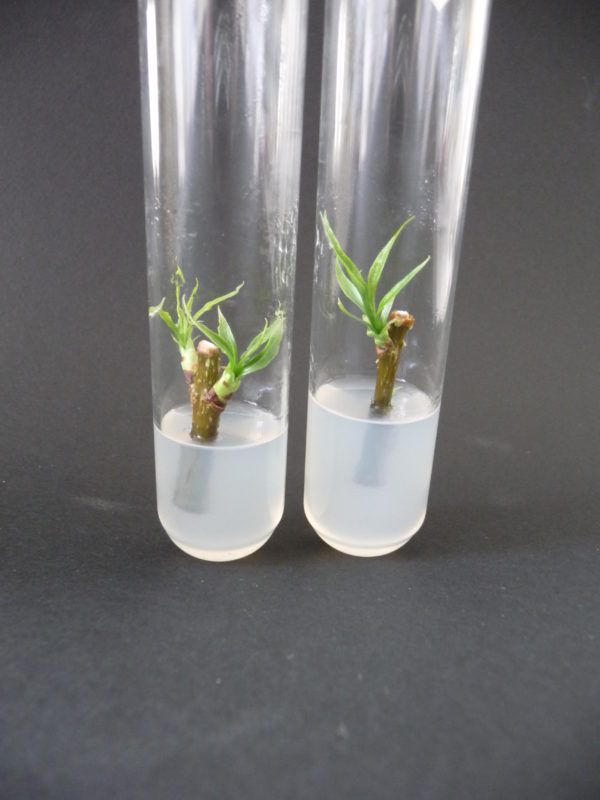

However, in relation to plants, this term is easy to apply and should not cause any trepidation. Every gardener knows that clones in the flora world are shoots, twigs of a certain plant. From the school course, we are familiar with this phenomenon as vegetative reproduction - a method of asexual reproduction by the appearance of a new individual from the cells of the body of the parent individual. The new plant will carry the same properties and exactly the same genes as its "mother". Therefore, they are called clones. At the same time, the advantages of such cloning are obvious:
- The gardener will know exactly how the "kids" will grow, since the donor bush has already been grown.
- One mother bush is able to give its owner a significant number of identical bushes. This will increase yields well.
- Clone plants have a great advantage over seedlings: they are stronger, more viable.
Most often, you can clone a plant by cutting off a stalk from it, so this is the easiest and cheapest way. To do this, you only need an adult plant in a growing state.
Important!
Until the end of the growing season, plant organisms are capable of such reproduction.
In addition to the "mechanical" method, there is also a completely natural one in nature. So, garden strawberries spontaneously clone themselves. During the growing season, the so-called whiskers form, at the ends of which new bushes develop rapidly. These newcomers take root well, and when the strawberry goes into a state of winter dormancy, the whisker connecting the clone with the "mom" dies off. So it turns out a new bush, independent and identical to the mother.
Strawberries are far from the only plant to create clones. With the help of cloning, creeping buttercup, cinquefoil goose, thiorella, chlorophytum, wild bilberry, arrowhead, and canadian elodea reproduce. But the record was set by the aspen poplar. One tree became the "parent" for a whole 43 hectare poplar field in Utah (USA). Scientists have found that all trees in this grove, 80,000 years old, have the same genomes, which means they are vegetative descendants of the mother tree.
So, the growing season is the revitalization time, the beginning of the active life of the plant. During this period, plant organisms are able not only to produce a crop, but also to reproduce in the most natural way for themselves - vegetative. If the gardener wants to recreate the look he likes, he can do this by cutting off a stalk from it before the end of the growing season. Also, by controlling the growing process, any gardener will certainly get a good harvest.
Many gardeners often do not see the difference between the growing season and the growing season. But they are significantly different. The first term refers to a certain period for all plants of any one climatic zone. The second term refers to plants of a particular species or variety and the period of their activity.
Vegetation
This period is considered the longest. At this time, the same processes occur in trees as in grasses, with the exception of death.
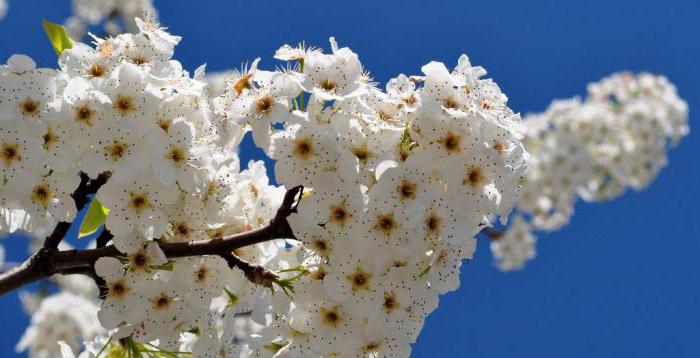

In the middle of the growing season, the tree slows down growth, but all the leaves continue to perform their function and accumulate starch. Shoots begin to become covered with lignified bark, and the roots slow down growth.
Basic concepts
This period will be different for certain species and varieties of plants. A purely biological term that characterizes each plant separately.
The growing season is a certain period of time during which a plant goes through an active period of its growth. For example, for early maturing cucumbers, the growing season is 95-110 days.
If we are talking about perennial plants, such as apple, pear, plum, etc., then the growing season in them arises as soon as flower buds begin to swell, and this period ends with the fall of leaves in autumn. Further, in winter, there is an inactive phase of tree growth - this is no longer the growing season. However, if you properly care for the plant in winter, then you can speed up its growing season, we will talk about this later.
Important!
The growing season characterizes a separate plant species.
The growing season for trees in tropical and equatorial climatic zones follows a slightly different scenario. For example, it is customary to consider the growing season of a banana tree such an interval of time: from the beginning of flowering to the collection of fruits. After that, although the tree remains green, it leaves the growing season for a while.
Growing season
This term covers all plants of a particular climatic zone.
We will talk about all the plants for our zone, what the vegetation of fruit trees is and how to define it, as well as the growing season of some vegetable crops.
Did you know?
From the beginning of December to the end of January, the roots of the trees are completely inactive.
The annual life span of perennial plants can be divided into four periods:
- Vegetative growth;
- Transitional autumn;
- Period of relative rest;
- Transitional spring.
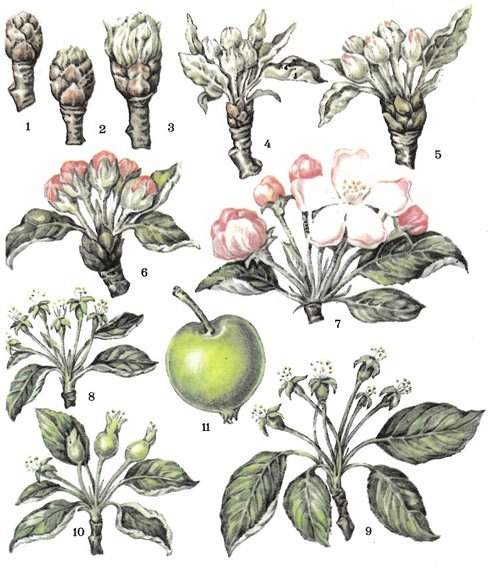

For perennial plants in our climatic zone, these periods are repeated every year. The growing season covers only three items from this list: 1, 2 and 4. The winter period is not considered to be the growing season.
The time interval of 4 points can start with a slight delay, or, conversely, earlier than it should. It all depends on when the real spring warmth begins, when the snow and night frosts leave.
The temperature required for a plant to begin normal vegetation differs for each species or variety. For example, an apricot tree grows earlier than a cherry or pear. But it is generally accepted that for the beginning of the growing season, the air temperature should be at least +5 ºС. This applies not only to fruit trees, but also to vegetable crops.
Important!
Replenishment of plants with mineral fertilizers accelerates the vegetation process.
It is worth noting that the growing season of annual vegetable plants is still different. It is generally accepted that the beginning of this process is the rise of seeds, and the end is the drying of plants. But some plants bear fruit several times during a warm period of time, then this period can be counted from the beginning of the appearance of flowers until the fruit is fully ripe.
What is vegetation
Most gardeners confuse the growing season with the growing season of plants. They believe that there is no difference between the two. In fact, these terms are different. In the first case, we are talking about the growth activity of a certain species or variety of plant culture. The second concept means cyclicality for vegetation in a specific climatic zone.
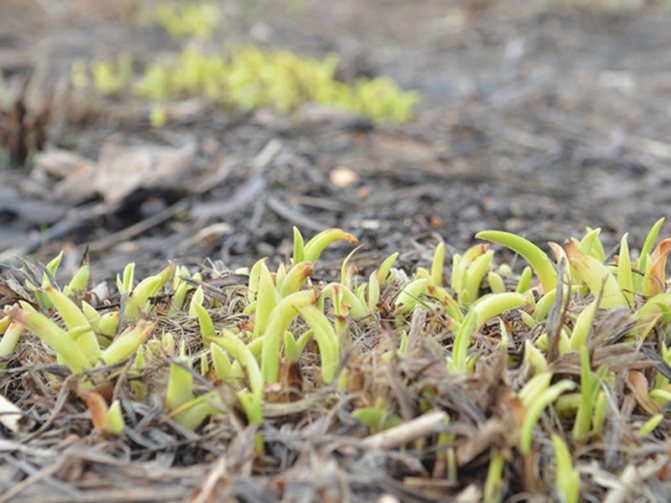

Vegetation is the growth and development of a plant organism. Each perennial or annual plant has its own development cycle. They are noticeably different from each other. For perennial crops, the annual span is divided into 4 periods:
- vegetative growth;
- autumn transitional;
- phase of relative rest;
- spring transitional.
In our climatic zone in perennials, all these periods alternate every year in the same way. The growing season excludes only the time of relative rest, since in winter even the roots of trees are completely inactive. The time interval, consisting of 4 main dates, can be shifted, start earlier or later. It depends on the onset of spring heat, when the snow melts and the night frosts pass.
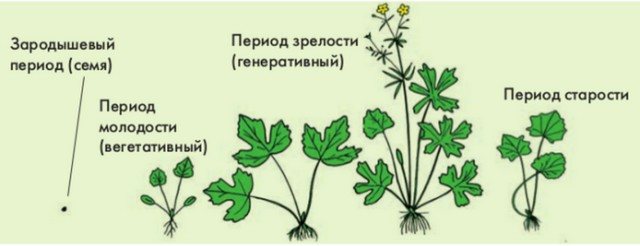

Each type and variety of plants requires its own temperature for the beginning of the growing season. If you take an apricot tree, then such a period begins earlier for him than for cherries. It is believed that for the beginning of growth and development, the air temperature should be at least +5 o C, both for fruit and vegetable plants.
Is it possible to determine the growing season
The growing season of different species and varieties of plants is very different and cannot be enclosed in a certain framework. It is generally accepted that this period can last from three days to three months. But plants are always influenced by various factors:
- soil condition;
- weather;
- factor of heredity;
- various diseases and pathologies.
Depending on these factors, the growing season can vary over time. Sometimes it can go up to nine months! Many crops in our climatic zone do not have time to fully ripen, and they are harvested earlier, since there is no time for ripening. Then it is said that the growing season ended incorrectly.But still there is a way to determine the growing season in plants and understand what it really is. For example, when you buy a bag of seeds, it must indicate the growing season, its beginning and end. As for fruit trees, we have already said that the beginning is when the buds swell, and the end is when the leaves fall. For example, the growing season of some potato varieties begins when the sprout germinates and ends when the plant is completely dry and the potatoes can be dug up.
Factors affecting vegetation
The growing season for plants of different species and varieties can vary significantly. Average values are considered to be a period from 3 days to 3 months. The timing depends on several factors, the main ones are:
- soil condition;
- climatic conditions;
- plant diseases and pathologies;
- heredity of cultures.
The climatic situation in our country is not always favorable to some plants. It happens that crops do not have time to ripen - in this case, the crop has to be harvested ahead of schedule. When the weather is favorable, the plants can produce several harvests per year - here the extended growing season allows the crops to thrive.
How is the growing season for different crops
For different crops, the growing season is different (what it is and how this term differs from the growing season, we already said at the beginning).
Did you know?
Lemon is the least heat demanding citrus fruit during the growing season.
The growing season of some vegetable crops:
The growing season for fruit trees is slightly different from that for vegetable crops. Here examples of growing seasons of some perennial trees
:
- The growing season for many early and mid-season apple varieties begins with the first warmth, and we can say that this is the main indicator. When the temperature reaches +5 ºС and does not drop for a week, the tree begins to bud. This is the beginning of the growing season. This period ends in late autumn, when the leaves fall.
- Cherries and plums begin their growing seasons on April 10-20. The period from budding to leaf blooming takes one and a half to two weeks. Then, in early May, the trees begin to bloom.
- Pear vegetation begins when the temperature stabilizes and reaches +6 ºС on average. With the beginning of this period, the root system of the tree begins to become active and calms down at an average daily temperature of 15-18 ºС.
Important!
The growing season depends on the genetics of the plant, and it is not always possible to speed up this period correctly.
What is the vegetation of vegetable crops and fruit trees, we figured it out. It is worth saying a few more words about corn, because many believe that it is grown incorrectly in our climatic zone. Sometimes corn simply does not have time to finish its growing season, and it is harvested ahead of time, before the onset of deep cold weather. Expert advice on this issue: sow earlier and shorten the growing season, which we will talk about in the next section.
The word vegetation comes from the Latin word vegetatio, which literally translates as "revitalization", "excitement". So, if you do not know what plant vegetation is, then, simply put, it is plant development.
There is such a thing as a growing season. We note right away that it should not be confused with the concept of the growing season.
- The growing season of plants is a biological concept and means a period of the year when the plant becomes most active: it grows and reproduces. You can learn more about the types of breeding in this article -.
- The growing season means the time elapsing from sowing or planting seeds, tubers to their full ripeness, i.e. until the time of harvest.The growing season divides crops into early-maturing, mid-maturing and late-maturing.
Is it possible to shorten the growing season and how to do it
Growing season shortening is when the plant goes through the entire growing season faster than the conventional time frame. Many gardeners often ask similar questions, because everyone goes to try fresh cucumbers and tomatoes earlier than they should.
To do this, you need to start sowing seedlings in February. Many sow seeds in small boxes and put them on the windowsill, and some create special greenhouses. All of these methods are great if you want to grow vegetables, namely those that bear fruit.
But if you figure out what the growing season of cauliflower, Brussels sprouts and other varieties of cabbage is, then it becomes clear that it does not bear fruit, in fact you are eating the leaves. This requires a slightly different approach to shorten the growing season. In this case, it is worth strengthening growth and slowing down the flowering process. This can be done through special preparations and fertilizers.
There is also a third type of shortening of the growing season. Not everyone understands what the process of shortening the growing season of fruit trees means. To do this, you need to take care of the plant. In late autumn, trees need to be thoroughly watered with various mineral supplements. In winter, in severe frosts, you need to throw a lot of snow on the root system of the tree. Then in the spring it will begin to bloom earlier and more actively.
Now we figured out the process of vegetation of various plants and understood what it is and how to manage this process. Finally, I would like to say that every gardener can have an excellent harvest if he adopts this article.
Features of vegetation
The growing season is most often not constant and varies depending on environmental conditions, it also depends on the characteristics of a particular variety. For example, a crop such as tomato produces several harvests throughout the year. To know the growing season, you need to know the timing of the first and last harvest.
Under certain conditions, for example, when the plant lacks nutrients, sun or moisture, the growing season may change.
Most often, the growing season for most plants in temperate climates begins in spring and ends in autumn. As for cereals and wintering spring plants, it begins in the fall, slows down in winter, and resumes again in the spring.
Conditions for favorable vegetation
The favorable course of the vegetation of plants is inextricably linked with the conditions of the external environment. The main ones are:
- Heat. For normal growth and development of plants, a certain temperature regime is required. The ground parts of the plants require more heat than the root system. Excess heat, like its lack, aggravate development and can lead to death.
- Water. It makes up 4/5 of the wet weight of plants. Its huge volumes are consumed at any period of their development. The main source of moisture is soil, air humidity is also important. Artificial irrigation is often an integral part of keeping the vast majority of plants to obtain the best yield from them.
- Shine. Under natural conditions, sunlight is the only source of energy for photosynthesis. The need for lighting depends on the species and varieties, the period of development, nutrition and conditions of the plants.
- Air. It is the main source of carbon dioxide for photosynthesis. Also, plants, mainly their root systems, take oxygen from the air.
- Nutrients... For the formation of organs and crops, plants still need various minerals. Depending on the conditions of keeping, the lack or excess of certain elements can significantly slow down the development or lead to the death of plants.Today, there are many organic, specially formulated chemical fertilizers and additives that can optimize the nutrition of any representative of the flora.
All these conditions are of equal importance, and their optimal combination determines the normal growth and development of any plant.
Why control vegetation
To get a big harvest, you need to know when and which plant needs vegetation control. Fruit and vegetable crops can be created in such conditions under which growth and development (vegetation) proceed most rapidly.
Cultivating cultivated plants, you can pursue different goals:
- If you want to harvest a good harvest of leaves, root crops, then in this case you need to accelerate the growth of the plant, but slow down fruiting, so that after the appearance of the peduncle, the culture does not become coarse and does not lose its taste. This applies, for example, to daikon, radish and some varieties of cabbage.
- If you need a bountiful harvest of fruits, then you need to slow down the beginning of the growing season. This applies, for example, to cucumbers and tomatoes. Such vegetables will be better stored, but it is worth considering that not all fruits will have time to ripen.
Thus, by controlling the vegetation, you get the best harvest.
Not many people know that in botany, concepts such as "vegetation" and "vegetation period" have slightly different meanings. The first of them determines the period of time in which any plant is most active, i.e. grows and develops as quickly as possible. The second concept means the time from the appearance of the initial seedlings to the harvesting of the resulting crop and covers the entire time of development of a plant. The growing season of plants, its duration as strongly as the growing season, affect the size and quality of fruiting of plant organisms.
It should be noted that the vegetation of a plant growing in the north will not be the same as if it grew in the south, due to different climatic conditions. Accordingly, in the south, the growing season can occur much faster than in the north.
However, this period can be accelerated. To do this, you should pay attention to the following methods:
Terms of vegetation of plants
- You can consider the growth of cucumbers. They are divided into early maturing and late maturing varieties. In the former, the growing season lasts about 100 days, in the latter, this period can take up to 115 days.
It should be noted that too low a temperature is not the norm for cucumbers. The most favorable in this case are the following indicators:
- - during the day from +20 to +25;
- - at night about +17.
This applies not only to cucumbers, but also to tomatoes.
- Tomatoes are also divided into several varieties: from early ripening (the growing season takes 65–75 days) to late ones, which have an average growing season of 125 days.
- In fruit trees (eg apple trees), the growth period lasts an average of 18–25 days, and the flowering period usually lasts about 10 days.
Observing the vegetation of plants
There are situations when vegetation should be controlled in order to obtain the desired yield in the future. Sometimes it will be useful to make the growing season accelerate, but the fruiting of the culture was, on the contrary, a little slower. An example for this is cucumbers or tomatoes. It is in this case, for storing fruits, it would be better to slow down the growing season of their culture. But it should also be borne in mind that vegetables must have time to ripen.
Why do you need control?
Some plants require control. This is required to obtain a quality crop. For fruit and vegetable crops, conditions are created in which their development is much faster.
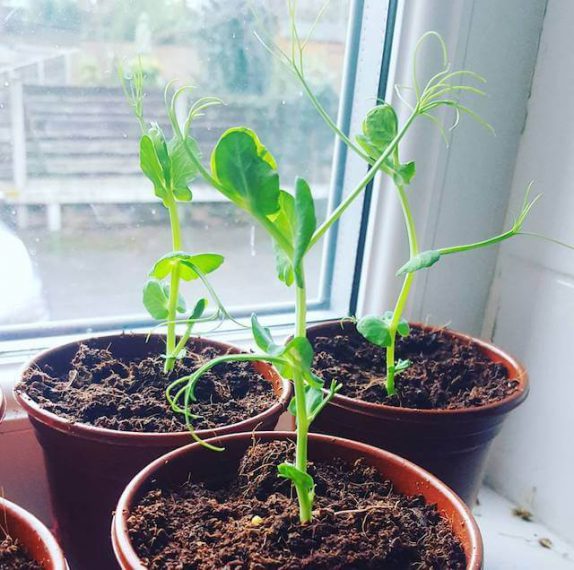

In order for a good bountiful harvest to appear, in some vegetables flowering must be accelerated, and fruiting must be slowed down. Cucumbers and tomatoes need to slow down this process. This is required for good storage of vegetables. It is only necessary for the fruits to ripen.
Thus, the growing season for all plants occurs at different times. Gardeners and gardeners are able to control this process. Using this information will allow you to get an excellent harvest.
Vegetation period
(vegetation; from Lat. vegetatio - revitalization, growth) - the period of the year in which the growth and development (vegetation) of plants is possible.
The length of the period depends mainly on the latitude and climate. In conditions of a lack of moisture, for example, in the desert, as well as in other extreme conditions (tundra), the growing season is significantly limited in time compared to a more favorable temperature period. This is, for example, the vegetation of the plants of the Atacama - the driest region on Earth.
Another meaning is the time it takes for the plant to develop:
- for an annual - from planting (seed germination) to seed ripening (harvesting);
- for perennials - from germination or swelling of the bud to seed ripening (harvesting);
- for trees - also the time of active life of plants from the beginning of sap flow and budding to leaf fall.
The growing season is conventionally determined by the time between the transition of the average daily temperature in spring and autumn through +5 ° С, less often for this, boundary temperatures of 0 or 10 ° С are used [1]. However, each plant has its own minimum temperatures. If cold-resistant plants tolerate low temperatures, heat-loving plants may die under the same conditions. Therefore, climatic summer is often taken for the growing season.
Each plant has a certain life cycle, which includes certain phases of development. Knowing the characteristics of this development helps people manage the growth process of various crops, increasing their productivity. For a better understanding of the life of any plants, it is important to know what the growing season of plants is and to understand all the nuances of this issue.
Vegetative period of cucumbers
The growing season in plants of this type, such as, for example, cucumber, requires increased attention of agronomists. To get a crop that is able to please, you need to know a lot about the peculiarities of the development of this plant.
First of all, before planting cucumbers, it is necessary to fertilize the soil with various minerals (you can create a solution and water the soil with it). Then loosen, form a hole and plant the finished seedlings there. It should also be noted that cucumbers are not planted as deeply as tomatoes and can be left at ground level.
Then, as soon as flowering begins, the first 4–5 of the nodules should be cut off to strengthen the root system better.
Not to mention the need for good, abundant watering in the future, it is necessary to pay tribute to the regular loosening of the soil. This is done in order to prevent crust formation on the surface of the earth and to provide good oxygen access to the root system of cucumbers, which is an important component of their vegetation.
Loosening can be done both before and after watering. However, in the first case, the depth should be about 12 cm, in the second - 2 times less. This allows not only to improve the "respiration" of cucumbers and their vegetative growth, but also to rid them of weeds that can carry various diseases and interfere with crop growth.
High tech
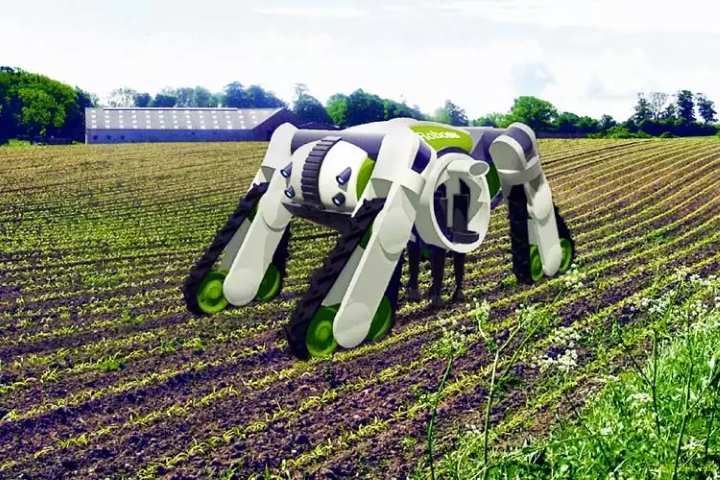

In the near future, people dream of ridding themselves of any agricultural work by creating robotics that will cultivate and harvest.
Genetic engineers are doing their bit and developing plants that are resistant to any disease.
For example, wheat and oats will soon be able to go through the growing season despite the weather conditions. More and more attention is paid to the concept of vegetation. For every scientist, this word means something personal.
Genetic engineers see it as a set of characteristics that affect the performance of the fruit.Technologists in the field of agronomy solve the problem of production profitability. Those who produce products are concerned about the time during which it is possible to carry out a full cycle of plant cultivation and achieve the greatest profit.
Resting state
This is the period when the plant "sleeps" and exists only due to what it managed to gain during its growing season. This usually lasts from the moment the cold began, trees and shrubs shed their foliage, crops brought their last harvest.
In order to avoid the death of the plant during this period, it is extremely important to carry out feeding in the fall so that in the spring it "wakes up" healthy and ready for the next growing season, which includes flowering, which also consumes a lot of energy and microelements.
Causes of slow vegetation
In general terms, the reasons for the slowdown in vegetation can be called an imbalance in the factors that determine the normal development of plants. The most common reasons for the slowing down of the growing season is the violation of the temperature regime. Thus, a hot summer has a detrimental effect on certain agricultural crops, which can cause a sharp decrease in yield. Frosts can also affect the slowed down development of plants.
Any lack of heat, water, light and nutrition can cause a malfunction in the formation and development of plants, which is why it is so important to monitor them, especially during the growing season.


